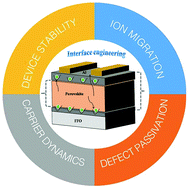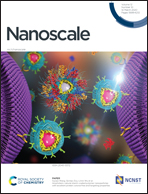Interfacial and structural modifications in perovskite solar cells
Abstract
The rapid and continuous progress made in perovskite solar cell (PSC) technology has drawn considerable attention from the photovoltaic research community, and the application of perovskites in other electronic devices (such as photodetectors, light-emitting diodes, and batteries) has become imminent. Because of the diversity in device configurations, optimization of film deposition, and exploration of material systems, the power conversion efficiency (PCE) of PSCs has been certified to be as high as 25.2%, making this type of solar cells the fastest advancing technology until now. As demonstrated by researchers worldwide, controlling the morphology and defects in perovskite films is essential for attaining high-performance PSCs. In this regard, interface engineering has proven to be a very efficient way to address these issues, obtaining better charge collection efficiency, and reducing recombination losses. In this review, the interfacial modification between perovskite films and charge-transport layers (CTLs) as well as CTLs and electrodes of PSCs has been widely summarized. Grain boundary (GB) engineering and stress engineering are also included since they are closely related to the improvement in device performance and stability.

- This article is part of the themed collection: Recent Review Articles


 Please wait while we load your content...
Please wait while we load your content...